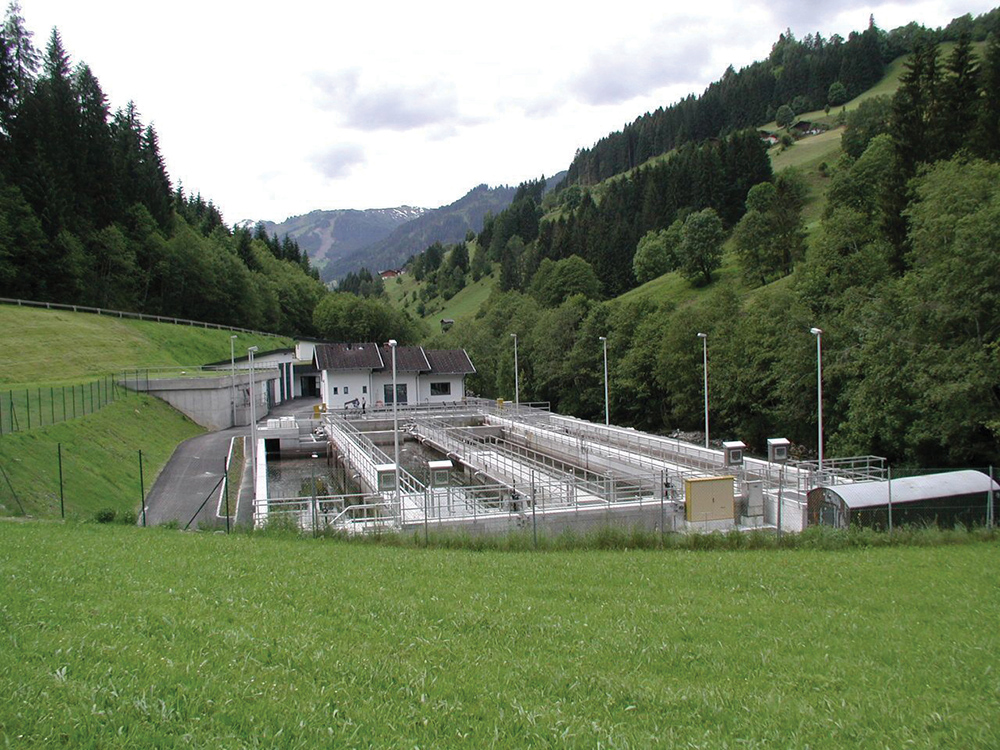By Ben Hazard Process Engineer
What’s the Problem?
Biological phosphorus removal is the phrase on everyone’s lips in the UK water industry at the moment, and achieving Bio-P removal with a low site footprint is the goal. Phosphorus and other nutrients that enter water courses through wastewater effluent discharge cause eutrophication in sensitive areas which drastically harms aquatic life. Therefore there are limits put into place for these sensitive areas on the concentration of nutrients that water companies are allowed to discharge – for phosphorus this currently stands at 2 mg/l for small sites and 1 mg/l for large sites, but this is expected to tighten to 0.1 mg/l in the coming AMP period. The number of sensitive areas is also expected to increase and both these factors highlight the need for water companies to invest in nutrient removal treatment processes to ensure they remain compliant in the years to come. A scarcity of available land for construction and financial constraints from Ofwat also calls for low footprint and low TOTEX solutions to be implemented for nutrient removal.
What’s the Solution?
Bio-P removal is typically achieved by creating the perfect conditions for the growth of phosphorus accumulating organisms (PAOs) within an activated sludge processes (ASP). These PAOs uptake phosphorus when aerated and are then removed from the treated effluent during sludge removal.
The C-TECH cyclic activated sludge process from SFC Umwelttechnik and delivered by Trant Engineering provides the perfect conditions for the growth of PAOs and therefore biological phosphorus removal, with treated effluent concentrations of < 1 mg/l.
The C-TECH process is fundamentally an adaption of the sequencing batch reactor (SBR) process, whereby secondary biological treatment and tertiary settling are combined in a single basin. However, with the C-TECH, two or more batch basin are installed in parallel with their sequences out of phase with each other allowing for a continuous flow through the system. Thus no upstream buffer tank is required, unlike traditional SBR systems. Such a process is known as a cyclic activated sludge process.
The phases of the C-TECH process are: Fill/Aerate, Settle, and Decant, and within these three phases, COD/BOD5, total nitrogen, bio-P, and solids removal all happen within a single tank with no mechanical mixing equipment or complex valving arrangements necessary. This really highlights the operation simplicity of the process and by eliminating the need for primary and tertiary settling tanks, buffer tanks, and anoxic zones, the overall site footprint reduction becomes clear.
As well as phosphorus removal, the C-TECH design allows for the formation of so-called Macroflocs. The enhanced size of these Macroflocs means that each floc contains an external aerobic zone and an internal anoxic/anaerobic zone even during the aeration phase of the C-TECH process cycle. This means that both nitrification and denitrification occurs simultaneously within the same reactor zone and cycle phase, therefore reducing the required reactor volume/overall cycle time when compared to traditional AS or SBR processes.
Case Study
The Grossarl plant in Austria gives a good indication of what the latest C-TECH design can achieve in UK conditions. The 18,000 PE, 3,440 m3/d (DWF) plant was built in 2004 as an upgrade to an existing two-lane activated sludge plant. Two new C-TECH lanes were built and brought online either side of the existing lanes, and then the two existing activated sludge lanes were converted into two further C-TECH lanes, creating a four lane system all whilst keeping the site operational. The total volume of the four reactor basins is 5,200 m3 with a footprint of 1130 m2.
Grossarl’s influent consists of a mixture of domestic and industrial wastewater with typical water quality values shown above. Also shown in the table are the design influent and average effluent qualities for 2014. Even during the coldest month, January, when the water temperature is below 8°C, high levels of biological nutrient and BOD5/COD removal are still achieved.
Summary
The C-TECH has had great success worldwide with over 400 installations and is now a fitting technology to meet the rising needs of the UK wastewater industry.
C-TECH Advantages:
- Continuous throughput allowing for elimination of buffer tank leading to ca. 50% reduction of plant footprint compared to conventional SBRs.
- Excellent effluent quality guaranteed – BOD5:SS:TN:TP of < 10:10:10:1 mg/l
- Capital savings of around 10-20% when compared to conventional ASPs.
- Energy savings of around 75-85% when compared to conventional ASPs.
- Very simple operation, with optional OUR control, and DWF, WWF and maintenance cycle protocols as standard.
www.trant.co.uk



